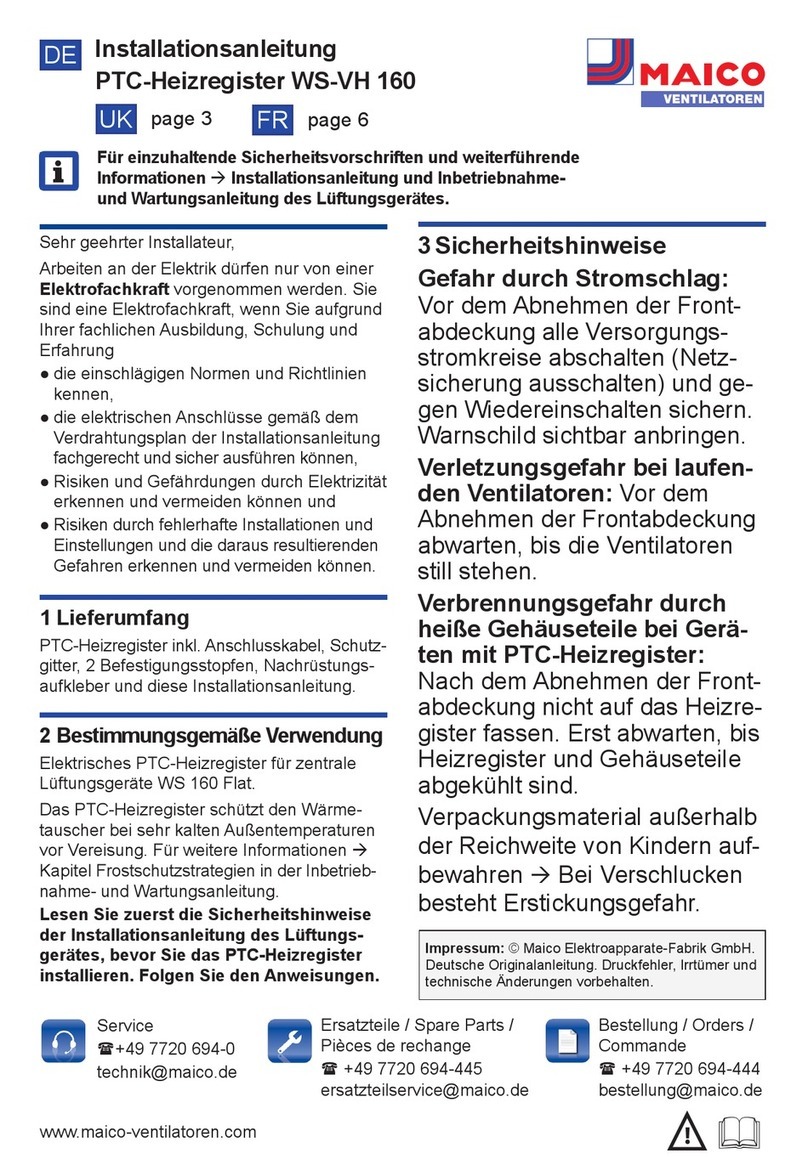
3. Sicherheitshinweise und
Warnungen
GEFAHR
Zeigt eine Gefahrensituation, die
zum Tod oder ernsten Verletzun-
gen führen wird, sofern sie nicht
vermieden wird.
VORSICHT
Zeigt eine möglicherweise
gefährliche Situation, die zu
leichten bis mittleren Körper-
verletzungen führen könnte.
Das Gerät darf in folgenden Situationen
auf keinen Fall eingesetzt werden.
Entzündungs-/Brandgefahr durch
brennbare Materialien, Flüssigkeiten
oder Gase in der Nähe des Gerätes.
In der Nähe des Gerätes keine brennbaren
Materialien, Flüssigkeiten oder Gase
deponieren, die sich bei Hitze oder durch
Funkenbildung entzünden und in Brand
geraten können.
Explosionsfähige Gase und Stäube
können entzündet werden und zu
schweren Explosionen oder Brand
führen. Gerät auf keinen Fall in explo-
sionsfähiger Atmosphäre einsetzen
(Explosionsgefahr).
Alle Sicherheitshinweise beachten.
Gefahren für Kinder und
Personen mit einge-
schränkten physischen, sen-
sorischen oder psychischen
Fähigkeiten oder mangeln-
dem Wissen. Gerät nur von
Personen installieren, in Betrieb
nehmen, reinigen und warten
lassen, welche die Gefahren
dieser Arbeiten sicher erkennen
und vermeiden können.
Gefahr durch Stromschlag bei Betrieb
mit nicht komplett montiertem oder
beschädigtem Gerät oder bei Verän-
derungen/Umbauten. Vor dem Öffnen des
Gerätes alle Versorgungsstromkreise
abschalten (Netzsicherung ausschalten),
gegen Wiedereinschalten sichern und ein
Warnschild sichtbar anbringen. Gerät nur
komplett montiert betreiben. Ein beschädig-
tes Gerät nicht in Betrieb nehmen. Ein Betrieb
ist nur mit Original-Komponenten zulässig.
Veränderungen und Umbauten sind unzuläs-
sig und entbinden den Hersteller von jeglicher
Gewährleistung und Haftung, z. B. wenn das
Gerät an unzulässiger Stelle durchbohrt wird.
Gefahr bei Nichtbeachtung der
geltenden Vorschriften für Elektro-
installationen.
Vor Elektroinstallationen alle Versorgungs-
stromkreise abschalten, Netzsicherung
ausschalten und gegen Wiedereinschalten
sichern. Ein Warnschild sichtbar anbringen.
Bei der Elektroinstallation die geltenden
Vorschriften beachten, z. B. DIN EN 50110-1,
in Deutschland insbesondere VDE 0100
mit den entsprechenden Teilen.
Eine Vorrichtung zur Trennung vom Netz
mit mindestens 3 mm Kontaktöffnung je Pol ist
vorgeschrieben.
Gerät nur an einer fest verlegten elektri-
schen Installation und mit Leitungen Typ
NYM-O / NYM-J, 3x 1,5 mm² anschließen.
Geräte nur mit auf Typenschild angege-
bener Spannung und Frequenz betreiben.
Die auf dem Typenschild angegebene
Schutzart ist nur gewährleistet bei bestim-
mungsgemäßem Einbau und bei ordnungs-
gemäßer Einführung der Anschlussleitung
durch die Leitungstülle(n). Die Tüllen müssen
den Leitungsmantel dicht umschließen.
Wartung und Fehlerfindung nur durch
Elektrofachkräfte zulässig.
Vorsicht beim Umgang mit Ver-
packungsmaterialien. Geltende
Sicherheits- und Unfallverhütungsvor-schriften
einhalten. Verpackungsmaterial außer
Reichweite von Kindern aufbewahren.




























